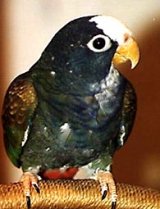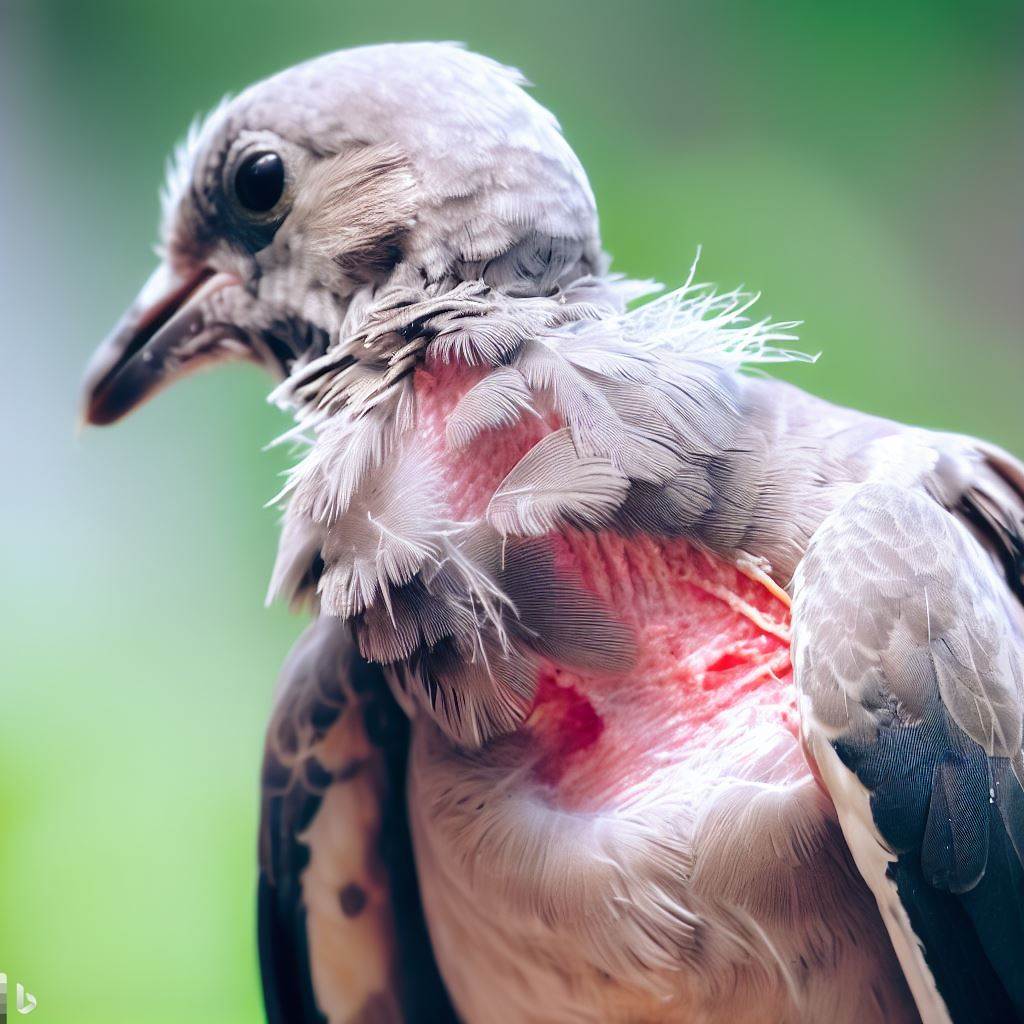
Some of the more common skin and feather disorders are discussed below. Others are covered in Common Skin and Feather Disorders Part II.
Feather Cysts
Feather cysts appear as oval or elongated swellings involving a single or several feather follicles. Although they may occur anywhere, they most commonly are found involving the primary feathers of the wings. A feather cyst occurs when a growing feather is unable to protrude through the skin and curls within the follicle. As the feather continues to grow, the mass enlarges and a cheesy exudative material composed of keratin accumulates.
Although feather cysts may be seen in all species, the highest incidence is in Blue and Gold Macaws and certain breeds of canaries.
It is thought these feather cysts may be the result of an inherited predisposition – as in certain species of canaries or acquired as a result of infection or trauma involving the feather follicle.
Treatment consists of surgically removing the involved feather follicles. If the follicle is just incised and the feather with its accumulation of keratin is removed, it will usually recur.
Baldness
Baldness is an acquired loss of feathers on the head. It is commonly seen in canaries. A hormonal imbalance and genetics are believed to be responsible.
Behavioral Feather Picking
Many cases of supposed behavioral feather picking have been found to have an underlying lesion that causes pruitis (itching) and self-trauma. It is very important that the skin is biopsied to be sure that there is no underlying cause leading to the trauma and picking.
Behavioral picking is a diagnosis reached after other causes have been ruled out.
Brown Hypertrophy
This condition is commonly seen in budgies. The cere (the structure containing the nostrils) hypertrophies, becoming cornified and keratinized. It may develop a prominent “hornlike” appearance.
This condition is most common in female birds and is believed to be associated with breeding in females and estrogen secreting gonadal tumors in males.
Polyfollicles, Polyfolliculitis
Polyfollicles is the growth of multiple feather shafts from one follicle. It may cause no problems or may be associated with chronic inflamation in fethers and skin. An itchy pollifelliculitis has been seen in lovebirds and budgies. The tail and dorsal neck area are the most common areas affected. This condition is thought to be caused by a virus.
Mites
The most common primary parasitic disease of companion birds is caused by mites. Several types of mites exist, affecting both feathered and unfeathered skin.
Most mites inhabit the superficial portion of the skin, leading to thickening and flaking. If the cere is involved, the beak becomes malformed. Some mites are superficial and can be found by skin scrape, while other mites penetrate deeply and require a biopsy for diagnosis.
The two most common mites are Knemidokoptes and Myialges.
Knemidokoptes causes a type of mange known as “scaly face” and “scaly leg”. This mite burrows in the nonfeathered areas around the cere, beak, eyes, vent and legs. Different species of mites affect different species of birds.
Knemidokoptes is most frequently found in budgies but has been also reported in other species of birds.
The lesions develop very slowly, so that an infected bird may appear normal for a long period of time. It is thought that these mites are acquired in the nest, with the infection remaining latent for a long period of time.
Tiny nonitching wartlike lesions appear at the commissures of the beak or around the cere. Advanced infestation spreads to the unfeathered parts of the body.
The involved beak and skin develop a roughened honeycombed appearance consisting of tiny pits and tunnels. The beak becomes distorted as the mites affect the zone of growth. Many birds will require life-long beak trims and shaping.
Canaries and finches more commonly have their legs and feet affected by these mites. Their legs become scaly and crusty and their claws become overgrown and cracked. Affected birds often become unable to perch.
Secondary bacterial infection and arthritis may occur. These mites are microscopic. Diagnosis is based upon the characteristic physical appearance they produce and skin scrapings. These mites may be affectively treated with ivermectin, an insecticide. “Cage protectors” and mite spray are ineffective in clearing these. Untreated and sometimes treated birds may develop permanent disfigurement.
In pigeons, a type of knemidokoptes causes severe itching and this is often referred to as “depluming scabies”. These mites tunnel into feather follicles and feather shafts causing severe itching and feather loss.
Additional disorders such as myialges nudus mites, xanthomas skin patches, ulcerative dermatitis, abscesses and tumors of the uropygial or preen gland and bumble foot are covered in Common Skin and Feather Disorders Part II.

